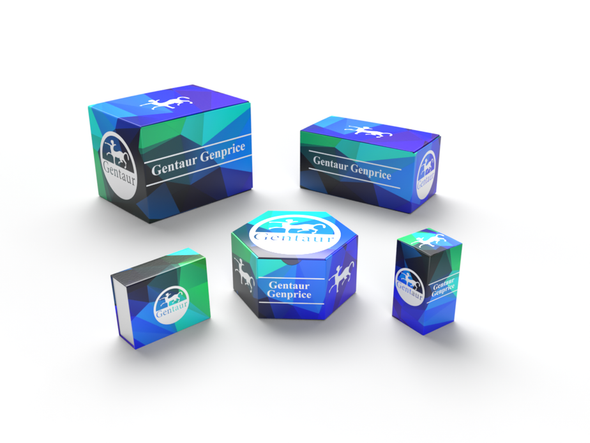749
Mouse Signal recognition particle 14 kDa protein (SRP14) ELISA Kit | KTE70259
- SKU:
- 749-KTE70259
- Availability:
- Usually ships in 5 working days
Description
Mouse Signal recognition particle 14 kDa protein (SRP14) ELISA Kit | KTE70259 | Gentaur UK, US & Europe Distribution
Application: This Mouse Signal recognition particle 14 kDa protein (SRP14) ELISA Kit employs a two-site sandwich ELISA to quantitate SRP14 in samples. An antibody specific for SRP14 has been pre-coated onto a microplate. Standards and samples are pipetted into the wells and anySRP14 present is bound by the immobilized antibody. After removing any unbound substances, a biotin-conjugated antibody specific for SRP14 is added to the wells. After washing, Streptavidin conjugated Horseradish Peroxidase (HRP) is added to the wells. Following a wash to remove any unbound avidin-enzyme reagent, a substrate solution is added to the wells and color develops in proportion to the amount of SRP14 bound in the initial step. The color development is stopped and the intensity of the color is measured.
Detection Method: Colorimetric
Conjugate: N/A
Sample Type: Cell culture supernatants#Serum#Plasma#Other biological fluids
Assay Type: Multiple steps standard sandwich ELISA assay with a working time of 3-5 hours. It depends on the experience of the operation person.
Kit Component: • Mouse Signal recognition particle 14 kDa protein microplate
• Mouse Signal recognition particle 14 kDa protein standard
• Mouse Signal recognition particle 14 kDa protein detect antibody
• Streptavidin-HRP
• Standard diluent
• Assay buffer
• HRP substrate
• Stop solution
• Wash buffer
• Plate covers
Features & Benefits: Mouse Signal recognition particle 14 kDa protein (SRP14) ELISA Kit has high sensitivity and excellent specificity for detection of Mouse SRP14. No significant cross-reactivity or interference between Mouse SRP14 and analogues was observed.
Calibration Range: Please inquire
Limit Of Detection: Please inquire
Usage Note: • Do not mix components from different kit lots or use reagents beyond the kit expiration date.
• Allow all reagents to warm to room temperature for at least 30 minutes before opening.
• Pre-rinse the pipet tip with reagent, use fresh pipet tips for each sample, standard and reagent to avoid contamination.
• Unused wells must be kept desiccated at 4 °C in the sealed bag provided.
• Mix Thoroughly is very important for the result. It is recommended using low frequency oscillator or slight hand shaking every 10 minutes.
• It is recommended that all samples and standards be assayed in duplicate or triplicate.
Storage Instruction: The unopened kit should be stored at 2 - 8°C. After opening, please store refer to protocols.
Shipping: Gel pack with blue ice.
Precaution The product listed herein is for research use only and is not intended for use in human or clinical diagnosis. Suggested applications of our products are not recommendations to use our products in violation of any patent or as a license. We cannot be responsible for patent infringements or other violations that may occur with the use of this product.
Background: The signal recognition particle (SRP) is a ribonucleoprotein complex that mediates the targeting of proteins to the endoplasmic reticulum (ER) . The proteins are bound to the 7S RNA as monomers (SRP19 and SRP54) or heterodimers (SRP9/SRP14 and SRP68/SRP72) . SRP9 and SRP14 constitute the Alu domain of 7S, whereas the other 4 proteins belong to the S domain. SRP has at least 3 distinct functions that can be associated with the protein subunits: signal recognition, translational arrest, and ER membrane targeting by interaction with the docking protein. The predicted amino acid sequence was found to be approximately 90% similar to the mouse homolog. The human sequence is longer at the C terminus and the predicted protein is 18 kD rather than 14 kD.
Alternative Names: SRP14; ALURBP; MGC14326;
Search name: SRP14; ALURBP; MGC14326;
Tag: SRP14






